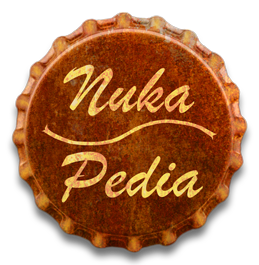There are seven drainage chambers and two sealed cisterns scattered around the Capital Wasteland. These are minor dungeons, and all are home to Fallout 3 radio stations broadcasting Morse code (except Oscar Zulu and Yankee Bravo). The particular message is explained at length on the page for signal Kilo Bravo. Many of the stations do not have a map marker, but can be spotted easily from far away by looking for the tower.
- All have a transformer at the base of the tower with a switch to throw that starts the encoded broadcast, except Kilo Bravo (switch inside WKML).
- The entry to the underground ham radio station will be nearby (check your local map or the links below if having trouble).
- You can also zero in on the broadcast. It actually comes from the sewer grate or manhole entrance, not the tower itself. They have a short broadcast distance of roughly 200 yards (183 meters). At the edges of the broadcast, it is entirely static. At its source, there is no static and the signal can be heard clearly.
- Turning off the ham radio stops the transmission. As you might expect, this happens when turning the radio's dial ends in a click. It can be turned back on, but you have to select it in your Pip-Boy again to hear it.
Signal stations
- Signal Kilo Bravo (KB) [1] - Also in northwest, from WKML Broadcast Station, a bit southeast of signal Alfa Lima and far south of Fort Constantine.
- Signal Oscar Zulu (OZ) [2] - In the northeast quadrant of the map, a bit southeast of relay tower KX-B8-11 and northeast of Temple of the Union. Bob Anderstein broadcasts a plea for medical help for his son.
- Signal Alfa Lima (AL) [3] - In the northwest quadrant of the Fallout 3 map, at broadcast tower KB5, just west of the deathclaw sanctuary.
- Signal Echo Foxtrot (EF) [4] - At broadcast tower LP8, near the north edge of the map, south of Oasis.
- Signal Oscar Tango (OT) [5] - South of Jury Street Metro station.
- Signal Sierra Romeo (SR) [6] - On the western edge of the map at broadcast tower KT8, due north of Little Lamplight and northeast of Vault 87.
- Signal Yankee Bravo (YB) [7] - In the northeast part of the map, north-northwest of the Corvega factory. Feral ghouls are broadcasting their heavy breathing.
- Signal Sierra Victor (SV) [8] - In the southwest quadrant of the map, southeast of Jocko's Pop & Gas stop.
- Signal Papa November (PN) [9] - Due west of Megaton, near the west edge of the map, at a tower just west of the Charnel House. Southwest of Fort Bannister and northwest of Evergreen Mills.
The numbers in [brackets] denote the drainage chamber's designation in the G.E.C.K. For example, signal Kilo Bravo is interior location FFRadioCache01 and its unique radio (with broadcasting script) is designated FFHamRadio01. The FFHamRadio records also show the signal names.
The reasons for these signals are unknown. The variation in messages suggests that they did not all exist to a common purpose, however. Their usage of the NATO phonetic alphabet is common of both military operations and HAM radio operators, as well as anyone with training in radio communications protocol. They could have been groups sent into the wasteland for reconnaissance, search & rescue, raids, search & destroy, or pre-War distress signals on loop. They could also be Chinese spies from before the war. However, there is no information to support any specific theory, aside from the content of the radio messages themselves and the equipment found along with the remains of the radio operators.
Notes
- Many signal chambers have at least some purified water, suggesting that they were initially inhabited when the bombs fell.
- Even if you kill off all the ghouls broadcasting over signal Yankee Bravo, you can still hear the ghoul's heavy breathing over the radio, meaning one of them may have accidentally recorded themselves and hit the repeat button.
- It's possible that these stations were inspired by a sequence in the post-apocalyptic drama "On The Beach" (1959), in which a group of war survivors in a nuclear submarine disembark to look for signs of life in a destroyed city; one of them hears Morse code and attempts to locate the source.
